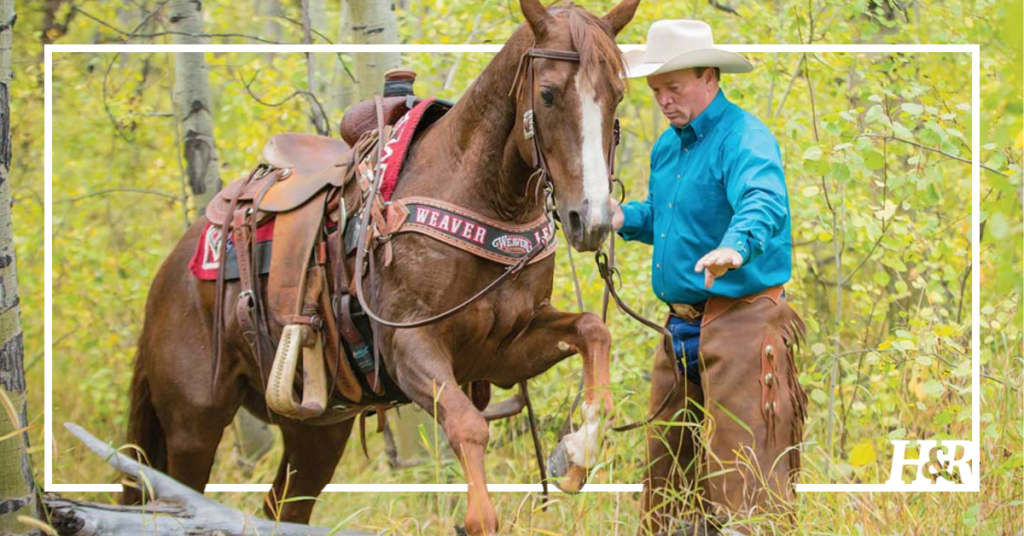
Out on the trail, your ability to control your body and stay balanced in the saddle affects your horse’s ease of covering terrain. The fitter you are, the more easily you and your horse can navigate trail challenges and handle long or difficult rides. Good overall fitness helps your riding all year long, but it’s especially important to be mindful of your conditioning as you prepare for a challenging ride. Though your horse may be the one covering the ground, your ability to manage your weight in the saddle or step off to lead when the terrain gets rough improves the experience.
These four questions will help you determine if you and your horse are ready to meet the physical demands of the trail. I’ll also share my advice to help you prepare for success.
Am I Physically Prepared?
It’s important to understand your fitness level and personal limitations. If you have medical or physical conditions that inhibit your abilities, communicate these ahead of time to your riding partners. It allows them to set expectations for the ride and collectively plan a route that’s reasonable for everyone in the group.
If you have an upcoming trip planned, don’t procrastinate your conditioning to the very last moment. If you try to make up for lost time, you’ll be too sore to enjoy the outing. Instead, prepare weeks in advance. For a longer ride or after a long exercise hiatus, it can take months to get back into the shape needed. As you begin, take a slow, steady approach. Work yourself into a light sweat each time you exercise, three to four times per week. Depending on your baseline, a short, brisk walk will elevate your heart rate and get you to start sweating. In time, it’ll take more effort to get the same results and you’ll need to increase the time and/or intensity of your exercise.
Can I Manage the Ride?
Difficult trail rides require an engaged rider, and sometimes that might mean you must dismount and assist your horse through terrain from the ground. If you face logs or narrow, rocky passes and bodies of water that your horse simply can’t manage, you’ll have to dismount and lead him through it. You must be fit enough to cover this terrain with little difficulty. Fit riders are also more agile. Your reaction time is better, so you’re able to move your body quickly and athletically to navigate obstacles or react in a stressful situation.
If your route is more adventurous than your physical capability, you can get into trouble. So, prepare yourself ahead of time and remove yourself if you encounter a situation on the trail that you aren’t physically capable of handling. Always remember to communicate with your group. They can help when you struggle and will be understanding if you need to pull back and move on.

How Much Can My Horse Carry?
The amount your horse can comfortably carry depends on his size and bodyweight, and your skill as a rider. It’s less important how much you weigh and more critical how you handle that weight. An unskilled or heavy rider can cause significant damage to a horse’s back muscles and spine, and even bruise the horse’s kidneys if the horse must absorb most of the rider’s weight and momentum. Think of a beginner rider who hasn’t yet learned to move with the horse’s rhythm. As he bounces, the force of his weight goes into the saddle and sores a horse.
Following a few simple rules will help you determine the appropriate weight for your horse to carry. If you’re a beginner rider, under 15 percent of your horse’s total bodyweight, including gear, is best. An experienced rider can bump up to 20 percent of his weight. An advanced rider who’s athletic and extremely light in the saddle, can push this percentage up to 25 percent if necessary. For a 1,000-pound horse, this is 250 pounds. Make the same considerations for pack horses. Gear is dead weight, so stay within 15 to 20 percent of your horse’s body weight.
Is My Horse in Shape?
Make your horse’s fitness a priority, too. Prepare him ahead of time for the challenges of your trail ride. He should be physically fit enough to navigate at least twice the distance or difficulty of the terrain that you’ll actually encounter during a ride.
Trainer, clinician, and lifelong cowboy Ken McNabb hails from Lovell, Wyoming. He helps riders and horses build and enjoy partnerships working on the ranch and riding on the trail. His show, Discovering the Horseman Within, airs weekly on RFD-TV. Learn more about McNabb and find his clinic schedule at kenmcnabb.com.

